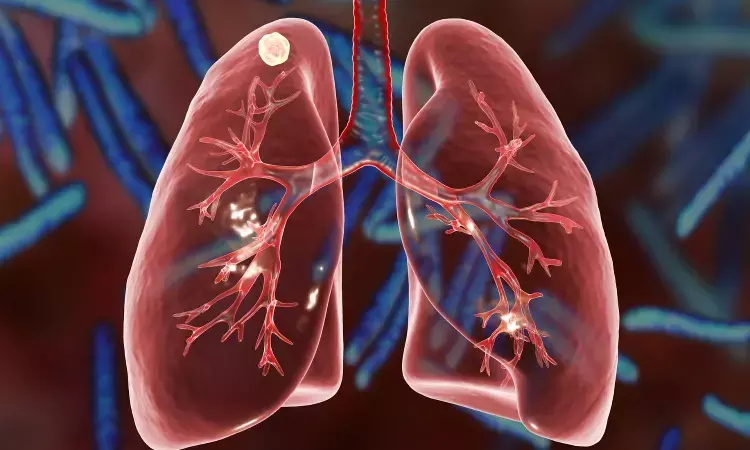- Home
- Medical news & Guidelines
- Anesthesiology
- Cardiology and CTVS
- Critical Care
- Dentistry
- Dermatology
- Diabetes and Endocrinology
- ENT
- Gastroenterology
- Medicine
- Nephrology
- Neurology
- Obstretics-Gynaecology
- Oncology
- Ophthalmology
- Orthopaedics
- Pediatrics-Neonatology
- Psychiatry
- Pulmonology
- Radiology
- Surgery
- Urology
- Laboratory Medicine
- Diet
- Nursing
- Paramedical
- Physiotherapy
- Health news
- Fact Check
- Bone Health Fact Check
- Brain Health Fact Check
- Cancer Related Fact Check
- Child Care Fact Check
- Dental and oral health fact check
- Diabetes and metabolic health fact check
- Diet and Nutrition Fact Check
- Eye and ENT Care Fact Check
- Fitness fact check
- Gut health fact check
- Heart health fact check
- Kidney health fact check
- Medical education fact check
- Men's health fact check
- Respiratory fact check
- Skin and hair care fact check
- Vaccine and Immunization fact check
- Women's health fact check
- AYUSH
- State News
- Andaman and Nicobar Islands
- Andhra Pradesh
- Arunachal Pradesh
- Assam
- Bihar
- Chandigarh
- Chattisgarh
- Dadra and Nagar Haveli
- Daman and Diu
- Delhi
- Goa
- Gujarat
- Haryana
- Himachal Pradesh
- Jammu & Kashmir
- Jharkhand
- Karnataka
- Kerala
- Ladakh
- Lakshadweep
- Madhya Pradesh
- Maharashtra
- Manipur
- Meghalaya
- Mizoram
- Nagaland
- Odisha
- Puducherry
- Punjab
- Rajasthan
- Sikkim
- Tamil Nadu
- Telangana
- Tripura
- Uttar Pradesh
- Uttrakhand
- West Bengal
- Medical Education
- Industry
Artificial Intelligence may Improve Tuberculosis Treatment

Imagine you have 20 new compounds that have shown some effectiveness in treating a disease like tuberculosis (TB), which affects 10 million people worldwide and kills 1.5 million each year. For effective treatment, patients will need to take a combination of three or four drugs for months or even years because the TB bacteria behave differently in different environments in cells-and in some cases evolve to become drug-resistant.
Twenty compounds in three- and four-drug combinations offer nearly 6,000 possible combinations. How do you decide which drugs to test together?
In a recent study, published in the September issue of Cell Reports Medicine, researchers from Tufts University used data from large studies that contained laboratory measurements of two-drug combinations of 12 anti-tuberculosis drugs. Using mathematical models, the team discovered a set of rules that drug pairs need to satisfy to be potentially good treatments as part of three- and four-drug cocktails.
The use of drug pairs rather than three- and four- drug combination measurement cuts down significantly on the amount of testing that needs to be done before moving a drug combination into further study.
"Using the design rules we've established and tested, we can substitute one drug pair for another drug pair and know with a high degree of confidence that the drug pair should work in concert with the other drug pair to kill the TB bacteria in the rodent model," says Bree Aldridge, associate professor of molecular biology and microbiology at Tufts University School of Medicine and of biomedical engineering at the School of Engineering, and an immunology and molecular microbiology program faculty member at the Graduate School of Biomedical Sciences.
"The selection process we developed is both more streamlined and more accurate in predicting success than prior processes, which necessarily considered fewer combinations."
The lab of Aldridge, who is corresponding author on the paper and also associate director of Tufts Stuart B. Levy Center for Integrated Management of Antimicrobial Resistance, previously developed and uses DiaMOND, or diagonal measurement of n-way drug interactions, a method to systemically study pairwise and high-order drug combination interactions to identify shorter, more efficient treatment regimens for TB and potentially other bacterial infections.
With the design rules established in this new study, researchers believe they can increase the speed at which scientists determine which drug combinations will most effectively treat tuberculosis, the second leading infectious killer in the world.
Research reported in this article was supported by the Bill & Melinda Gates Foundation under award number OPP1189457 and by the National Institutes of Health under award number 1U54CA225088. Complete information on authors, funders, and conflicts of interest is available in the published paper. The content is solely the responsibility of the authors and does not necessarily represent the official views of the National Institutes of Health.
Reference:
Jonah Larkins-Ford, Yonatan N. Degefu, Nhi Van, Artem Sokolov, Bree B. Aldridge, Published: September 08, 2022 DOI: https://doi.org/10.1016/j.xcrm.2022.100737
Dr Kamal Kant Kohli-MBBS, DTCD- a chest specialist with more than 30 years of practice and a flair for writing clinical articles, Dr Kamal Kant Kohli joined Medical Dialogues as a Chief Editor of Medical News. Besides writing articles, as an editor, he proofreads and verifies all the medical content published on Medical Dialogues including those coming from journals, studies,medical conferences,guidelines etc. Email: drkohli@medicaldialogues.in. Contact no. 011-43720751


